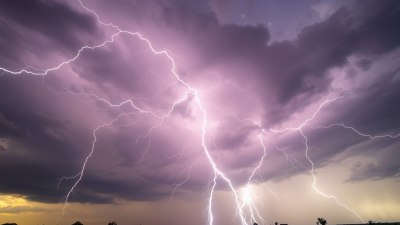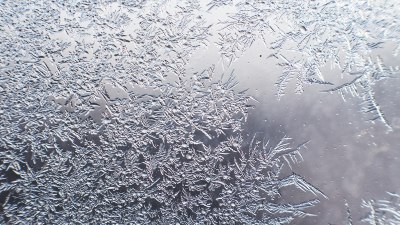Why Some Clouds Have Flat Bases
Explore the science behind flat-bottomed clouds and what influences their formation and appearance.

Clouds, those fascinating formations suspended in the atmosphere, exhibit a variety of shapes and characteristics. Among these, the flat-based clouds are particularly intriguing, capturing the attention of meteorologists and weather enthusiasts alike. Understanding why some clouds have flat bases involves delving into the processes of cloud formation, atmospheric conditions, and the physics of water vapor.
One of the primary reasons for the flat bases of certain clouds is the presence of a temperature inversion in the atmosphere. A temperature inversion occurs when a layer of warm air traps cooler air below it. This stable layer hinders vertical cloud development, causing clouds to form at the top of the cooler air mass. As these clouds accumulate moisture and rise, they can only develop further horizontally, resulting in a flat base. This phenomenon is well observed in stratocumulus clouds, often seen as uniform gray or white patches in the sky.
Another factor influencing the formation of flat-bases clouds is the concept of condensation nuclei. These tiny particles in the atmosphere, such as dust or sea salt, provide surfaces for water vapor to condense upon. When air rises and cools, moisture condenses around these nuclei, leading to cloud formation. If the moisture is evenly spread out and the conditions support horizontal expansion rather than vertical growth, the result is a cloud with a flat base. This characteristic is commonplace in stratus clouds, which typically blanket the sky in a uniform layer.
The Role of Atmospheric Stability
Atmospheric stability plays a significant role in determining cloud shape. In stable conditions, a lack of vertical movement inhibits the air from rising to higher altitudes where it might cool further and lead to more towering cloud formations. In contrast, unstable conditions encourage vertical movement, leading to the development of cumulus clouds with puffy tops and less defined bases. Thus, when the atmosphere is stable, flatter-based clouds are more likely to develop.
Additionally, the moisture content in the air is crucial for cloud formation. High humidity levels can lead to denser cloud formation, as there is more water vapor available to condense into droplets. However, if the humidity is not uniformly distributed, it can cause clouds to have uneven bases. When air is consistently saturated with moisture, flat-bases clouds, such as stratus clouds, can dominate the skyline.
The Influence of Winds
Winds also play an essential role in shaping cloud formations. When winds blow horizontally across a region, they can help maintain the flat bases of clouds. In such cases, the clouds might form as a result of air moving over a cooler surface, which can cause the air to cool and condense at a consistent altitude, again leading to flat bases. When these winds are moist and stable, they can perpetuate the existence of low-lying clouds with flat bases.
Cloud Types with Flat Bases
Stratus clouds are the most recognizable example of flat-based clouds. They frequently cover the entire sky and often create overcast conditions. Their formation is closely linked to the temperature inversion phenomenon, where warmer air caps cooler air, preventing significant vertical growth. Similarly, stratocumulus clouds are another form of low, lumpy clouds that can display flat bases. They typically appear in patches and can be indicative of stable weather patterns.
Another noteworthy cloud type with flat bases is altostratus. Often leading to precipitation, these clouds form at mid-altitudes and have a more layered appearance. They result from the gradual ascent of moist air, typically in a stable atmosphere where the cooling of air occurs at a consistent level.
Weather and Climate Impact
The formation of flat-bases clouds is not merely a scientific curiosity; it has practical implications for weather forecasting and climate science. Understanding cloud structures helps meteorologists predict weather patterns, including the possibility of rain, storms, or clear skies. Flat-based clouds, especially stratus and stratocumulus, often indicate stable weather, whereas their absence may suggest instability and potential storm formation.
Moreover, flat-based clouds play a critical role in the Earth's climate system. They influence radiative transfer by reflecting sunlight back into space and impacting the planet’s energy balance. Because stratus and similar clouds can cover vast areas, they can significantly affect local climates, especially in coastal regions or areas with extensive marine influence.
Cloud Observations and Studies
Cloud observation has been essential for advancing meteorological science. Researchers utilize a variety of tools, including satellites and ground-based measurements, to study cloud properties and dynamics. These observations feed into climate models and help improve our understanding of cloud behavior and their interactions with the atmosphere.
Studies have shown that cloud height, thickness, and base characteristics can provide insights into larger weather patterns. For instance, a thick layer of low stratus clouds may signal the nearing of a warm front, whereas thin stratus clouds can suggest stable conditions with little change expected in the weather. Such information is valuable for aviation, agriculture, and disaster management.
In summary, flat-based clouds are a fascinating aspect of meteorology, showcasing the delicate balance of atmospheric conditions, humidity, wind patterns, and the dynamics of cloud formation. Understanding their formation not only enlightens us about various cloud types but also provides essential context for weather patterns and climate impacts. By studying clouds and their characteristics, we gain deeper insights into the Earth's climate system and its ever-changing nature.











